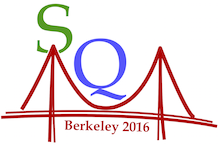Speaker
Hugo Denis Antonio Pereira Da Costa
(CEA/IRFU,Centre d'etude de Saclay Gif-sur-Yvette (FR))
Description
Charmonia (e.g. J/ψ and ψ(2S)) are mesons formed of a charm and anti-charm quark pair.
In high-energy hadronic collisions such as those delivered by the LHC between 2010 and 2015, charmonium production results from the hard scattering of two gluons in a process which occurs very early in the collision and with a timescale ∼1/2mc=0.08 fm/c, followed by the hadronization of the charm quark pair in a charmonium state with a timescale ∼1/αSmc=0.6 fm/c.
In pp collisions, quarkonium measurements help characterize production mechanisms. These same measurements also provide a reference baseline for p-A and A-A measurements which in turn quantify cold and hot nuclear properties of the Quark-Gluon Plasma (QGP).
In this presentation we will report on new forward rapidity ($2.5 Results on the production of the heavier and less bound ψ(2S) meson at forward rapidity and in pp collisions will also be presented.
The charmonium measurements will be compared to corresponding results performed by other LHC experiments at the same energy, to results obtained at lower energies ranging from √s= 2.76 to √s= 8 TeV, as well as to theoretical models.
| On behalf of collaboration: | ALICE |
|---|
Author
Hugo Denis Antonio Pereira Da Costa
(CEA/IRFU,Centre d'etude de Saclay Gif-sur-Yvette (FR))
Peer reviewing
Paper
Paper files:
